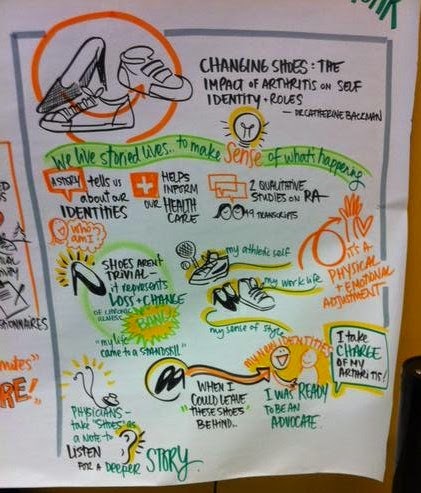Here's the link. It's called "Patient Preferences Matter: Stop the Silent Misdiagnosis". I thought this sounded very positive. The patient voice would be heard and their choices would be respected.
But after I read the paper I felt uneasy and unconvinced that this whole plan would be good for patients. The example used to demonstrate the point was 'Susan'. She's 78, has a family history of breast cancer and a heart condition. After a mastectomy which showed clear evidence of breast cancer she talks to a friend who did not have surgery. She elected to slow the cancer with hormones. Susan is sad, and had she but known of the 'no treatment' option would have chosen it. This is called 'preference misdiagnosis' and of course no one knows how prevalent it is because it would be hard to measure.
breast cancer from cancer.gov
The suggestion in the paper is that the doctors of the NHS should be better informed about patients preferences in a general way through surveys and should present all of the options.
The power that doctors have is very subtle. If my Dr. recommended treatment vs. no treatment and gave me the odds that would inform my choice I would listen carefully. But the doctor has power in the presentation. We pick up cues in person to person exchanges. The suggestion of no treatment can easily be taken as a recommendation, and we can't all ask our doctors "What would you suggest for your mother?"
It's easy for the patient to tell what response is most desired and to be influenced by the choices the doctor presents. The aim is "Giving the patients what they would want if they were fully informed" But the underlying idea that this is an opportunity for the NHS to save billions of pounds seems as though it should be out of place in a discussion about patient preference.
Julie's opinion:
I have read this ridiculous
article before and wondered what word games they were playing. It
sounded to me like they were encouraging people Not to seek professional
healthcare and that the patient's "personal preference" should be for the
good of the general economy - not the patient. The conclusions are
ridiculous in my opinion.
Gail's opinion
"I really think it’s vitally important that doctors do give us all the
information so that we can be involved in the treatment choices. I would
never, for example, blindly let a GP/Consultant prescribe me a course of
treatment without at least doing my own research and knowing all the ins
and outs first. I think part of this is about doctors realizing that
our say in our treatment is vitally important, and ensuring we have all
the medical knowledge we need to understand why a treatment might be the
best for us, not just to be told that they are going to do this and
that’s all there is to it.
We
need all the options, not just the cheapest or easiest for them to
accomplish."
They imagine lots of people in
their 70s and 80s saying "No surgery, radiation, chemo etc
for me. I'll likely die of something else first""
My friend's
mom is an equivocal example: For her it worked fine - she is a notable
exception. Breast cancer at 83. Dr did lumpectomy - told daughter it was
malignant but in view of her age he would not suggest radiation or chemo. He told his patient (her mom) they got it
all. The Mom thought she ducked it and did not believe it when her daughter said it
was malignant.
Now, 20 years later, she is 103 and still lives on her own. Lucky it was a very slow growing cancer and the lie to the patient had no ill effects.



















